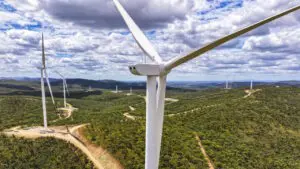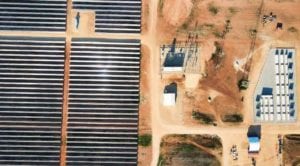In the US, even with cheap gas, most major utilities are deciding that battery storage is a better bet to meet peak demand problems that gas generators. In Australia, many utilities are leaning the same way, although not the federal government and its wholly owned Snowy Hydro.
The Coalition government has threatened to build a 1 gigawatt gas plant to replace the soon-to-retire Liddell coal generator. It downgraded that to 250MW after belatedly acknowledging at least some of the projects already planned by AGL and others, including battery storage, and it’s unlikely it will have to do even that once the full opportunities are seized by the market.
If the gas plant proposed for Liddell is a peaking plant – and no one in Australia is seriously considering a “baseload” replacement due to the cost of gas – then it’s likely to be rarely used. And when it is used, it will be very expensive.
That’s where battery storage comes in as a battery option. AGL has recognised this and hailed the “dawn of the battery era”, and is rapidly recalibrating its plans as it recognises the increasingly compelling case for big batteries.
This is driven not only by the anticipated fall in the cost of battery storage (Tesla pointed to a more than 50 per cent reduction over the next three years at its long awaited Battery Day), but also the development of markets that enable battery storage to be properly rewarded for the multitude of services that it can deliver.
New research by Cornwall Insights Australia, an energy consultancy, shows there is an increasing value for batteries in Liddell’s home state of New South Wales (NSW) to shift generation from one time period to another.
It finds that the spread (the difference in the cost of charging and discharging) has grown from around $130 a megawatt hour in 2018, to around $288/MWh in 2020.

On top of this, the capital cost of battery storage has fallen well below the capital costs for Open Cycle Gas Turbines (OCGTs, or peaking plants), and its “fuel cost” – the price at which it charges, or buys electricity – is now trending down towards just $10/MWh. That is significantly below gas peaks. So batteries are winning on capital costs and operating costs.
Ben Cerini, one of the lead consultants to Cornwall, says Frequency Control Ancillary Services (FCAS) markets already account for a significant amount of value in current battery storage projects in the National Electricity Market (NEM). But there is now real potential value for battery storage energy trading.
“Battery storage value is a sign to the government that we don’t need more gas-powered generation,” he says.
“Also, if we are projecting a tightening of gas supplies on the east coast and the government wants to push gas prices lower, then building large gas-powered generation (GPG) is counterproductive.
“Batteries are dispatchable, they now compete with GPG as peaking assets in their own right and are winning in huge capacities (in auctions in the US). With new markets emerging in the NEM, it will not be long before projects like this begin to look feasible in the Australian market.”
That’s important. Most batteries in Australia have had little storage duration, because their target market has been FCAS, which requires storage in terms of minutes rather than hours. But as the cost becomes more competitive, then battery storage with four hour storage will become prevalent in Australia, and peaking gas generators will find it hard to compete.
See also: Does Scott Morrison have any idea what a big battery can actually do?










